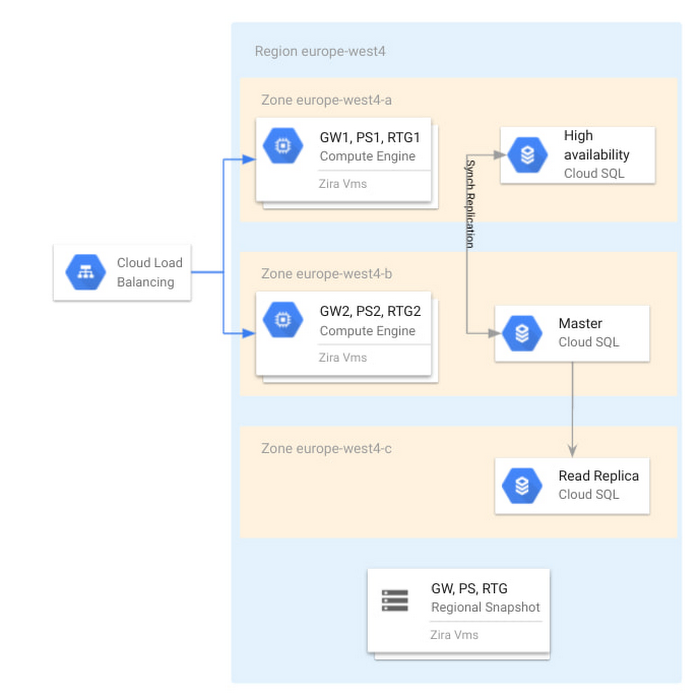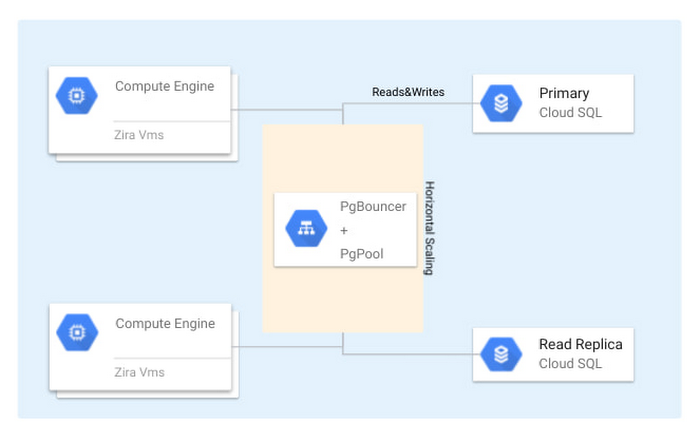TIM Group chooses Cloud SQL to power its billing apps
Enrico Rocino
ICT Manager, TIM Group, Responsible for “Wholesale - Billing to Cash” - IT Digital Solutions
Try Google Cloud
Start building on Google Cloud with $300 in free credits and 20+ always free products.
Free trialEditor’s Note: In this blog, we look at how TIM Group, a leading information and communication technology (ICT) company in Italy and Brazil, used Cloud SQL for PostgreSQL to deliver a new billing application and saw 45% savings in database maintenance and infrastructure costs.
TIM is the leading group in Italy and Brazil in the ICT sector. It develops fixed and mobile infrastructures. Furthermore, TIM operates in cloud infrastructure and data centers through Noovle, its cloud and edge computing subsidiary. TIM offers services and products for communications and entertainment, placing itself at the forefront of digital technologies. In early 2020, TIM Group set out to solve a common challenge faced by large enterprises: keeping up with competitive trends and new technological developments. One of our core IT systems, our billing function, was in need of a modernization overhaul and so we began a digital transformation project to build a new billing system on Google Cloud powered by Cloud SQL for PostgreSQL and Google Compute Engine. The new system was designed to automate important billing and credit systems that had been previously processed manually, and has already resulted in a 45% cost savings in database management, and a 20% savings in infrastructure costs.
Designing a new digital journey
My team is responsible for the development and maintenance of new billing systems for wholesale network access services. We began building a new system in 2020 that would modernize the way we bill for our B2B services with other telecom operators in the wholesale market, which in terms of revenue is an enormous market segment for TIM Group. The new billing system will help us to automate the formerly manual business processes for billing and credit management, and will eventually allow our IT department to decommission 16 legacy on-premise systems.
Benchmarking Cloud SQL for a new billing system
We initially started this project with a different planned architecture than the one we ended up building. At the outset, we had a blueprint architecture not based on PostgreSQL database, and we acquired a license of a billing product called Wholesale Business Revenue Management (WBRM) from Zira to configure and customize as a base for our new billing system, compatible with the most widespread SQL databases. Ultimately, we were designing a solution to run in our data centers based on databases available in our environment, and a couple of months into the project we signed the partnership with Google Cloud. This decision opened up the possibility of running solutions on a modern cloud environment. We were excited by many of the capabilities we saw in Google Cloud’s solutions, including Cloud SQL, their fully managed relational database service for running MySQL, PostgreSQL and SQL Server.
We tested the performance of Cloud SQL for PostgreSQL to see if it was comparable with the benchmark that Zira gave us for running WBRM with high loading data volumes. The results were excellent; Cloud SQL for PostgreSQL met the benchmark that Zira had given us based on previous stress tests. Using a database like Postgres would allow us to save on licensing costs. To conduct these tests, we wanted to measure application performance, scalability and ease of maintenance.
We started with vertical scalability. We incremented the virtual CPUs and RAM by 20% and got a proportional benefit in throughput. We then tested horizontally scaled read workload and found that we had the same performance in user interface response time when linked to a read replica of a Cloud SQL for PostgreSQL database. We tested availability by switching down a node on the database, and found that all services were redirected to the follower node of the database with zero downtime. We were satisfied and encouraged by the results of these tests, and proceeded to build our new billing system with WBRM and Cloud SQL for PostgreSQL.
Cutting database maintenance costs by up to 45%
The managed services of Cloud SQL for PostgreSQL have given us considerable operational benefits. We saw 45% savings in database maintenance, and an additional 20% savings in infrastructure costs, which is a conservative estimate since we’re still in the process of fully rolling out the new system. We expect even bigger savings by the end of the project, which will hopefully go fully live at the end of 2021.
Our project strategy has been to implement the new system in increments, replacing one service at a time. We started with services that weren’t supported by our legacy system and as year continues, we will continue work to dismiss legacy systems and to feed the new system with traffic usage, where we expect a huge ramp up of volume.
Peeking under the hood
Our cloud instances are located primarily in the Netherlands region, with virtual machines in europe-west4-zone a and b for high availability. We have a highly available Cloud SQL instance across those zones. In zone c, we also have a read replica that we use to offload workloads from the primary that require read access only. For example, some departments have revenue assurance systems that connect to this read replica to check on orders billed or any revenue problems. On-premises, adding a new read replica server to the database can take two to three months, as it requires hardware allocation, tickets etc. In the cloud we can set up a read replica in a matter of minutes.
For disaster recovery purposes, we make a daily backup with a 14 day retention period, and we have another operations team that is in charge of taking snapshots of our Zira VMs.
Below, you can see our high level architecture. The application itself is hosted on Compute Engine and can be accessed through a load balancer. You can also see Cloud SQL and the read replicas in every zone and region mentioned above.


Two of our requirements were to direct some of the read traffic to the read replica and also to pool connections together. To meet those requirements, we have deployed PgBouncer which takes care of diverting the traffic and pgpool that takes care of connection pooling in front of Cloud SQL, as you can see in the diagram below.


With Cloud SQL powering our new billing system, we can now automate previous manual billing and credit processing, dismiss over a dozen legacy systems, and build upon technology that provides high performance, easy storage scalability, high availability, and disaster recovery. And this is all at significant cost savings in database maintenance and infrastructure. In addition, we now have a database solution that integrates easily with other services like WBRM, and will empower TIM Group to innovate for use cases on our roadmap and beyond.
Read more about TIM Group, Cloud SQL for PostgreSQL and Wholesale Business Revenue Management (WBRM) from Zira.



